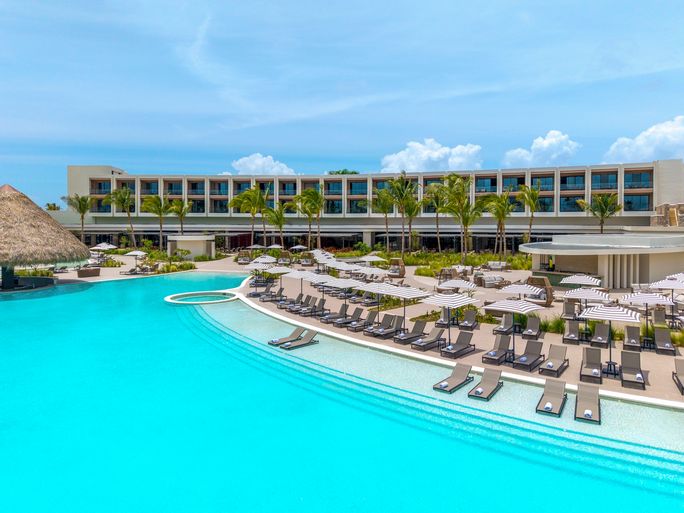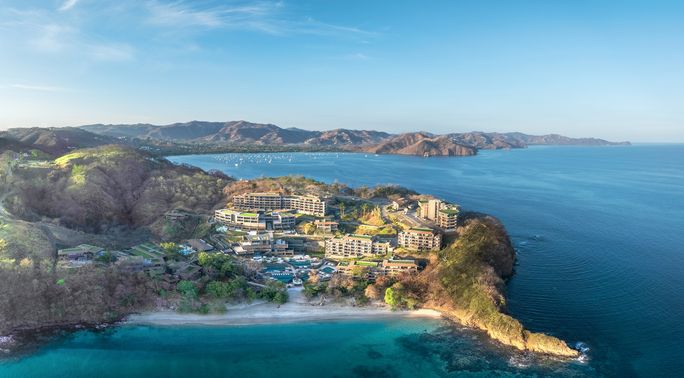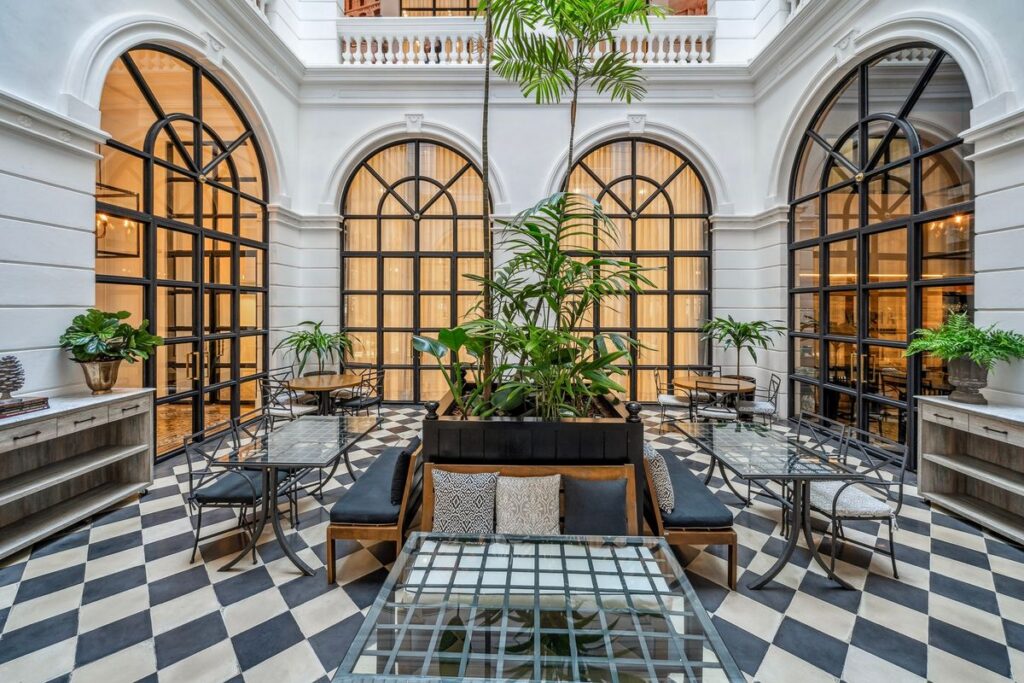
Hilton’s growth
across the Caribbean and Latin America (CALA) is showing no signs of slowing
down, according to Pablo Maturana (PM), the company’s new vice president of
development for the region.
After a record-breaking 2024, Hilton is pressing forward
with what Maturana calls “accelerated expansion.” In this exclusive interview, he discusses
Hilton’s new hotel pipeline and which destinations are the hottest for
development.
TP: What are your
main goals in leading Hilton’s CALA development?
PM: My primary goal is to build on Hilton’s exceptional
momentum in the CALA region and take our growth to the next level, together
with my exceptional team. In 2024, we had a record-breaking year in terms of
hotels added, and we signed 40 new deals across every segment and in diverse
destinations. By mid-2025, we’ll have already surpassed that number, with over
40 new deals signed. The momentum that we’re seeing to date signals not just
continued growth, but accelerated expansion.
My approach is both grounded and ambitious. I want to
build on what’s working, challenge what can be improved and always lead with an
intentional growth strategy. Hilton’s future in CALA is bright — and my team
and I are excited to help shape it.
TP: How many hotels
are currently in development?
PM: Hilton currently has 150 hotels in the CALA pipeline,
representing approximately 20,000 rooms across more than 25 countries. These
projects span over 15 of our award-winning brands, reflecting the strength of
our portfolio across all segments.
TP: What destinations
are witnessing the most growth?
PM: We’re focused on expanding in the destinations that
matter most to today’s travelers — whether that’s a beachfront resort in the
Caribbean or a dynamic city hotel in Latin America’s most vibrant urban
centers. Our pipeline is quite balanced, with many of our upcoming projects
being leisure-focused, including stunning resorts in destinations like Cancun,
Grand Cayman and Turks and Caicos, and many others catering to business and
mixed-use travel, with exciting developments in cities such as Medellín, Guadalajara
and San José.
TP: Which Hilton
brands are driving the most development in CALA right now?
PM: We’re entering a transformative phase of growth in CALA,
especially in the luxury and lifestyle segments — two categories where Hilton
is seeing breakthrough momentum. Today, we welcome guests at more than 100
luxury and lifestyle hotels across the region, including boutique properties
added through our strategic partnership with Small Luxury Hotels of the World
(SLH).
Our Waldorf Astoria
brand is experiencing a historic moment globally and regionally. Following the
iconic reopening of Waldorf
Astoria New York, we’ve expanded our footprint in CALA with the recent
opening of Waldorf
Astoria Costa Rica Punta Cacique, the first in the country, which joined a
prestigious lineup in the region that includes Waldorf Astoria Los
Cabos Pedregal, Waldorf
Astoria Riviera Maya and Waldorf
Astoria Panama. Looking ahead, we’re excited about the planned openings of
Waldorf Astoria San Miguel de Allende (2027) and Waldorf Astoria Turks and
Caicos Dellis Cay (2028), alongside Conrad Los Cabos, which joins Conrad
Tulum Riviera Maya and Conrad
Punta de Mita.

Zemi Miches Punta Cana All-Inclusive Resort, Curio Collection by Hilton. (Photo Credit: Hilton Media)
TP: What about your
lifestyle brands?
PM: Lifestyle is also a major growth engine. Currently,
nearly 45 luxury and lifestyle hotels are planned in CALA, representing over
25% of Hilton’s total pipeline in the region. Notably, 60% of all new signings
in the first half of 2025 fall within these segments, underscoring the rising
demand for high-end, experience-driven travel in beach and urban destinations.
Curio
Collection by Hilton is leading the charge in lifestyle expansion, with
nearly 20 hotels in development, followed by Tapestry
Collection with 10. Building on this success, we’re excited to launch Spark by Hilton, a
conversion-friendly brand in the premium economy segment — making its regional
debut in Puerto Rico with Spark by Hilton
Ponce later this year. We see significant potential for Spark across CALA,
particularly in Mexico and Brazil.
In the extended stay category, we’re bringing the
award-winning Home2
Suites by Hilton to the region, with multiple openings planned in Mexico
over the next few years.
TP: Which
destinations are especially strong for development?
PM: Mexico remains our powerhouse, serving as Hilton’s
largest market in the region and fifth globally. With more than 109 hotels open
and nearly 45 in the pipeline, we’re expanding across every segment — from
luxury and lifestyle to full-service, all-inclusive and focused service.
Brazil is another standout. Over the past three years, we’ve
more than doubled our footprint to 27 hotels and plan to nearly double it
again, with over 20 new projects in the pipeline.
The Dominican Republic is another high-growth market. With
eight hotels in operation and 12 more in development, we expect to nearly
triple our presence over the next three years. The Andean region, particularly
Peru and Colombia, is also gaining momentum.
TP: Hilton has been
scaling quickly in all-inclusive, especially in Mexico. How is your company
differentiating its all-inclusive product from competitors?
PM: Hilton is redefining what all-inclusive means. With over
a century of hospitality expertise, we’re bringing thoughtful innovation to a
category that’s often seen as one-size-fits-all. Today’s all-inclusive
travelers want more than convenience; they want quality, personalization and
memorable moments.
The all-inclusive segment is evolving fast, and Hilton is
staying ahead by focusing on what matters most: curated experiences, trusted
service and meaningful differentiation.
One of our biggest advantages is Hilton Honors, our
award-winning loyalty program with over 200 million members.

Waldorf Astoria Costa Rica Punta Cacique. (Photo Credit: Hilton Media)
TP: How is the rising
demand for multi-generational travel and wellness affecting Hilton’s approach
to the all-inclusive concept?
PM: That’s shaping how we think about resort design and
guest experiences in a meaningful way. For multi-generational travel,
flexibility is key. We’re designing more suites and villas that can comfortably
accommodate larger groups, with options like connecting rooms, multi-bedroom
layouts and private spaces that still feel part of the resort experience.
On the wellness side, we’re expanding spa and fitness
offerings to go beyond the basics. Guests are looking for more than just a
massage; they want yoga on the beach, nutrition-focused menus, and experiences
that help them recharge. And for families traveling with kids, we’re making
sure there are thoughtful touches too, like kids’ clubs and dining perks that
make the stay easier for parents.
TP: How does Hilton’s
sustainability strategy in CALA compare to the company’s overall strategy?
PM: At Hilton, we approach our impact locally, one hotel and
one community at a time. Our global strategy, Travel with Purpose, is all about
creating positive impact and lasting value for the people, places, and
communities where we operate. That means designing more sustainable stays for
our guests by focusing on energy efficiency, reducing water and waste,
protecting biodiversity and sourcing responsibly — all while enhancing the
experience for guests and team members alike. In CALA, this strategy is deeply
rooted in local partnerships and community engagement.
For the latest travel news, updates and deals, subscribe to the daily TravelPulse newsletter.

